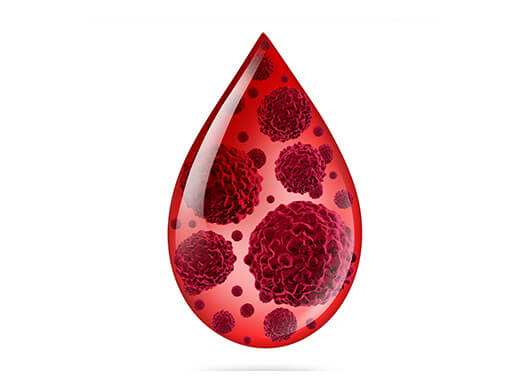A stem cell transplant is usually done after chemotherapy and radiation is complete. The stem cells are delivered into the bloodstream, usually through a central venous catheter. The process is similar to getting a blood transfusion. The stem cells travel through the blood into the bone marrow.
Donor stem cells can be collected in two ways:
- Bone marrow harvest - This minor surgery is done under general anesthesia. This means the donor will be asleep and pain-free during the procedure. The bone marrow is removed from the back of both hip bones. The amount of marrow removed depends on the weight of the person who is receiving it.
- Leukapheresis - First, the donor is given 5 days of shots to help stem cells move from the bone marrow into the blood. During leukapheresis, blood is removed from the donor through an IV line. The part of white blood cells that contains stem cells is then separated in a machine and removed to be later given to the recipient. The red blood cells are returned to the donor.
- After the transplant, supportive care is given to prevent and treat infections, side effects of treatments, and complications. This includes frequent blood tests, close monitoring of vital signs, strict measurement of fluid input and output, daily weigh-ins, and providing a protected and clean environment.
The days before transplant are counted as minus days. The day of transplant is considered day zero. Engraftment and recovery following the transplant are counted as plus days. For example, a patient may enter the hospital on day -8 for preparative regimen. The day of transplant is numbered zero. Days +1, +2, etc., will follow. There are specific events, complications, and risks associated with each day before, during, and after transplant. The days are numbered to help the patient and family understand where they are in terms of risks and discharge planning.
During infusion of bone marrow, the patient may experience the following:
- Pain
- Chills
- Fever
- Itchy skin rash
- Chest pain
After infusion, the patient may:
- Spend several weeks in the hospital
- Be very susceptible to infection
- Experience excessive bleeding
- Need blood transfusions
- Be confined to a clean environment
- Take multiple antibiotics and other medicines
- Be given medicine to prevent graft-versus-host disease—if the transplant was allogeneic. The transplanted new cells (the graft) tend to attack the patient's tissues (the host), even if the donor is a relative.
- Undergo continual laboratory testing
- Experience nausea, vomiting, diarrhea, mouth sores, and extreme weakness
- Experience temporary mental confusion and emotional or psychological distress
After leaving the hospital, the recovery process continues for several months or longer, during which time the patient cannot return to work or many previously enjoyed activities. The patient must also make frequent follow-up visits to the hospital or healthcare provider's office.



.png)
